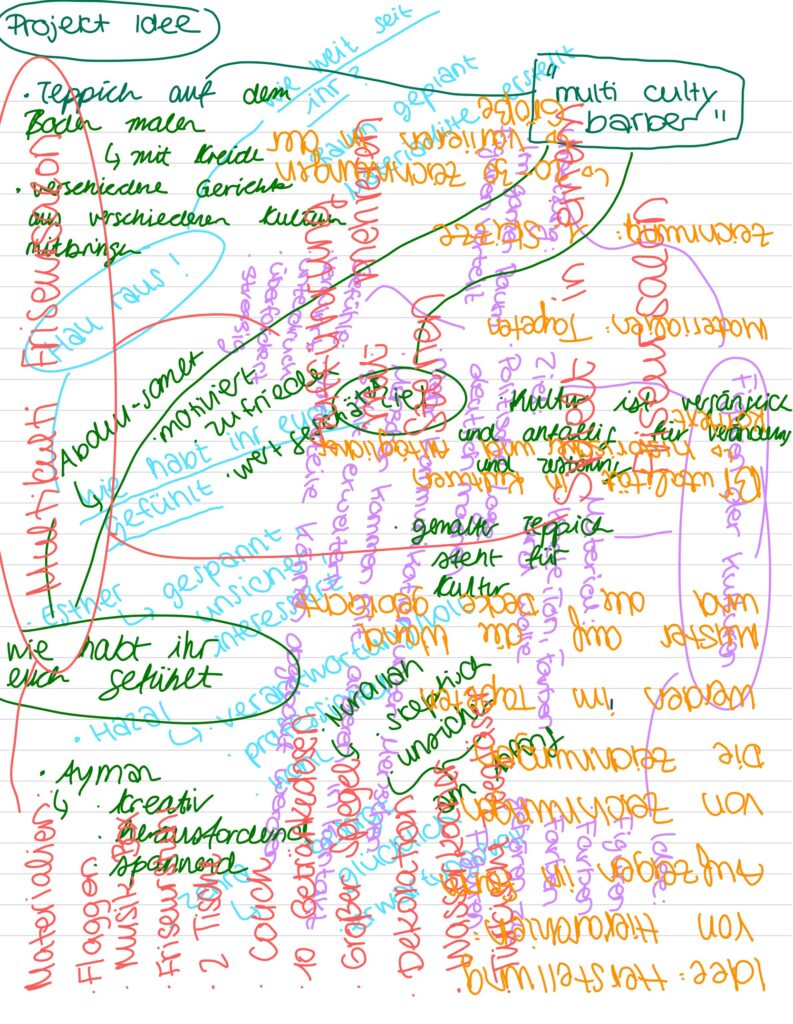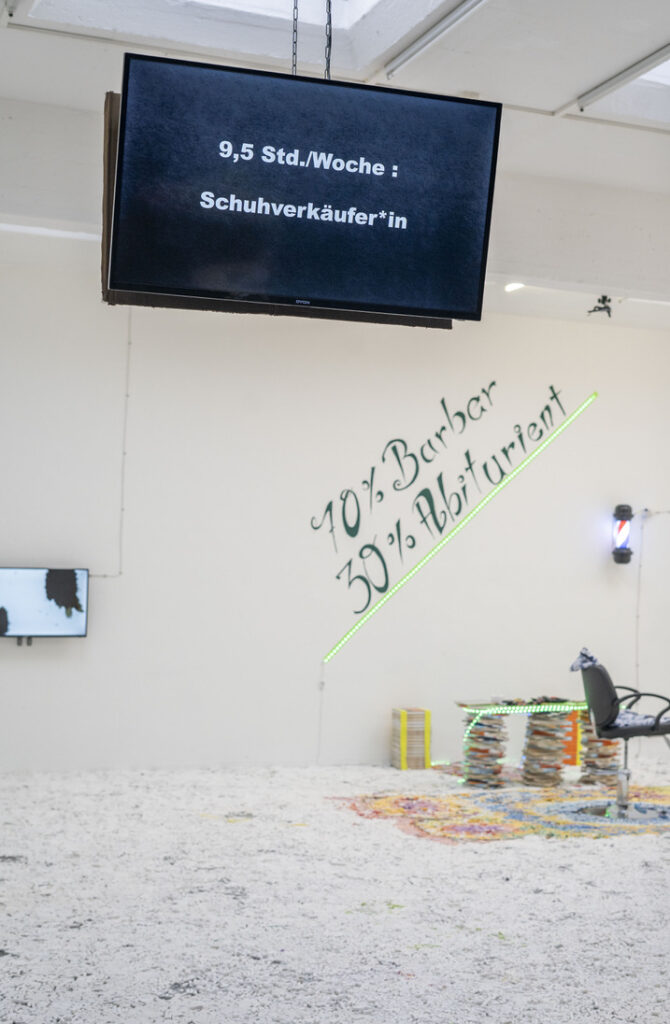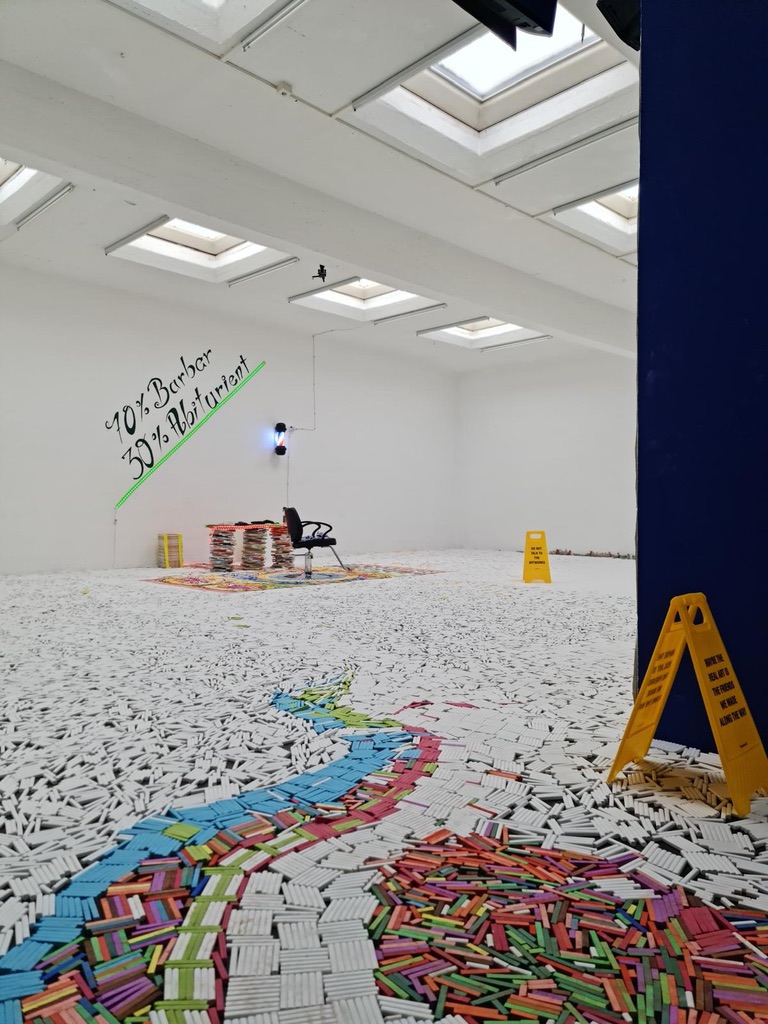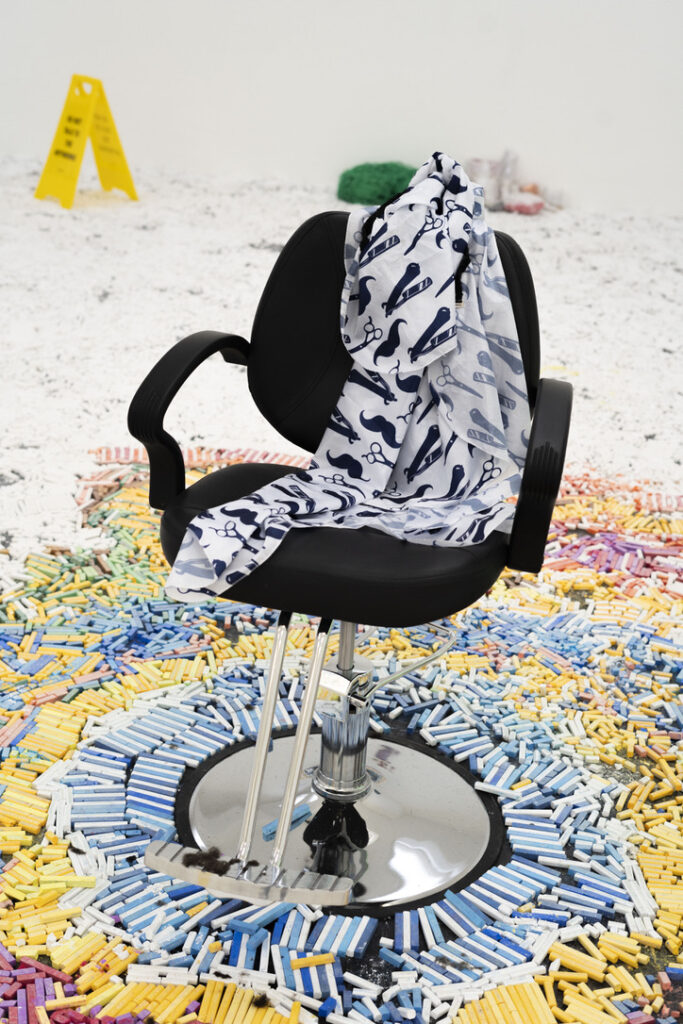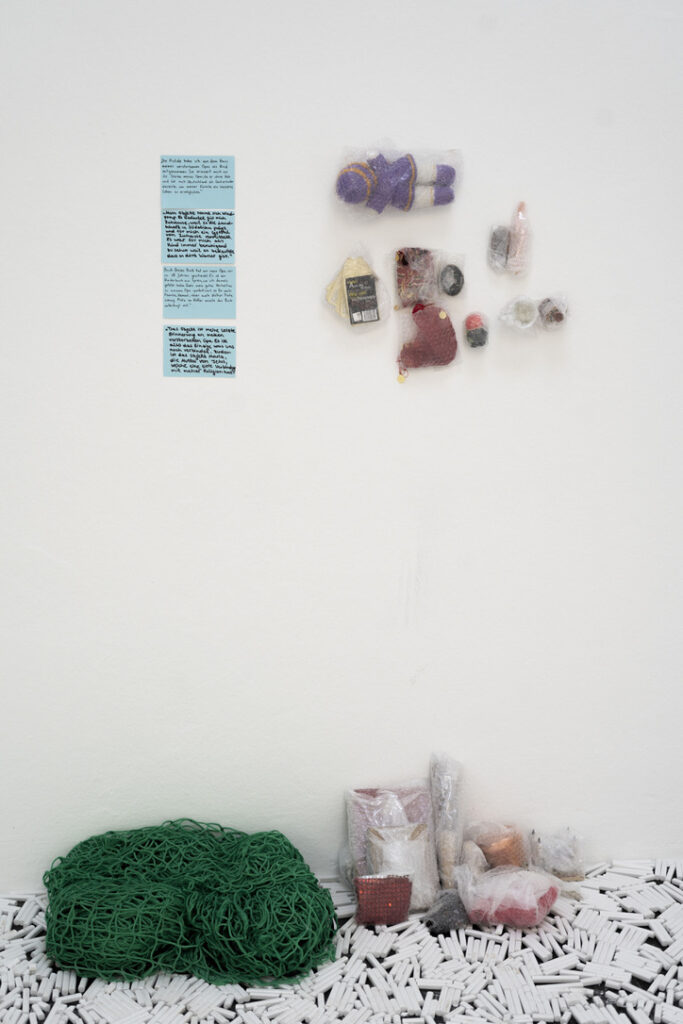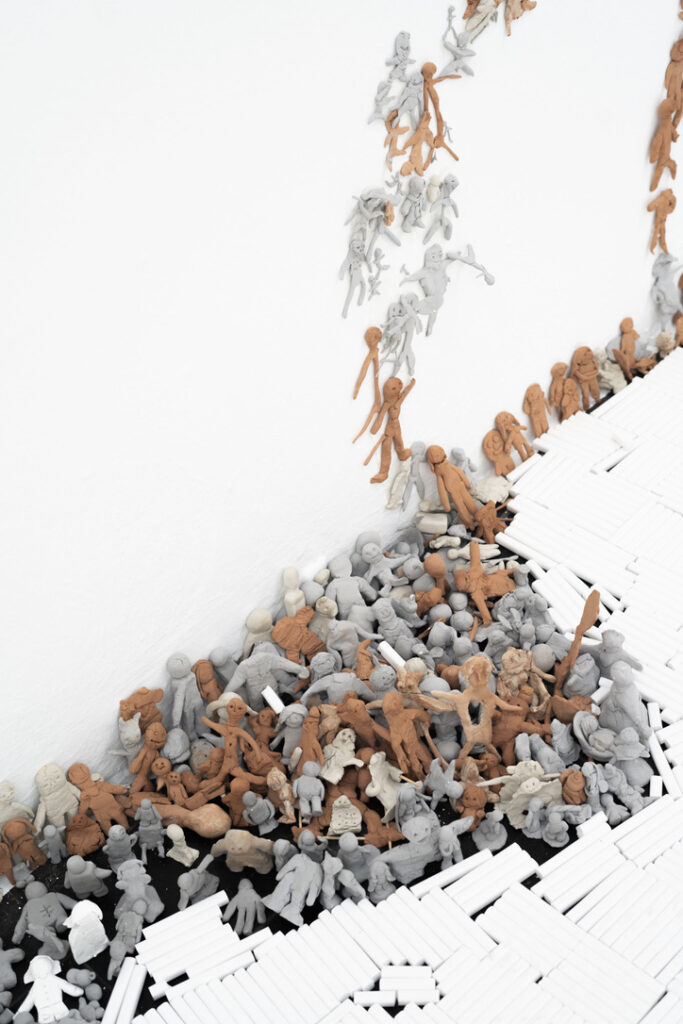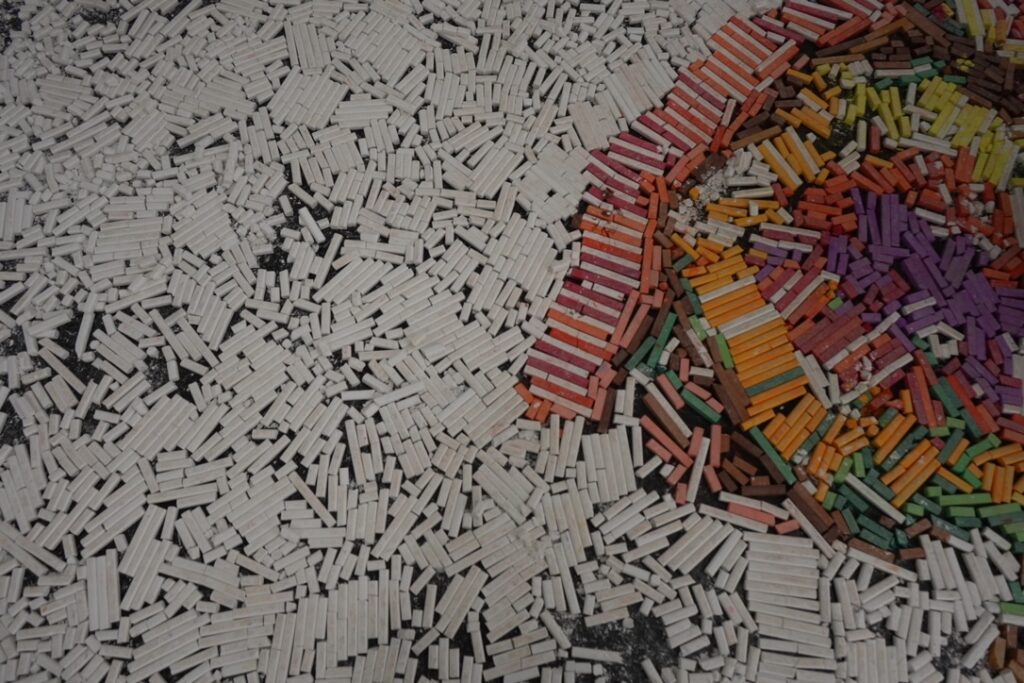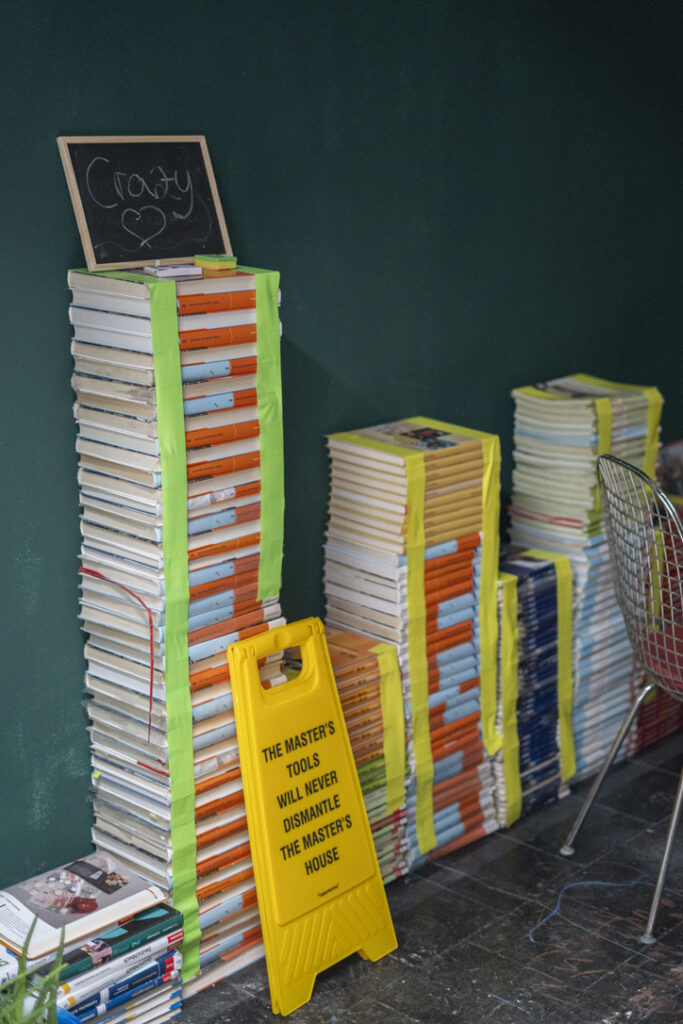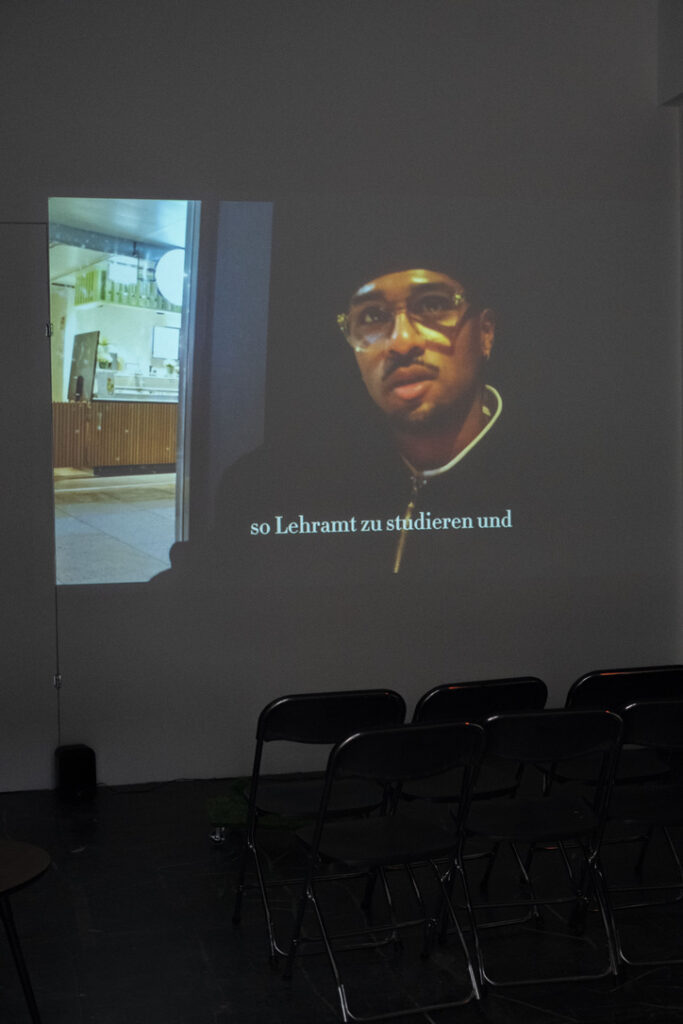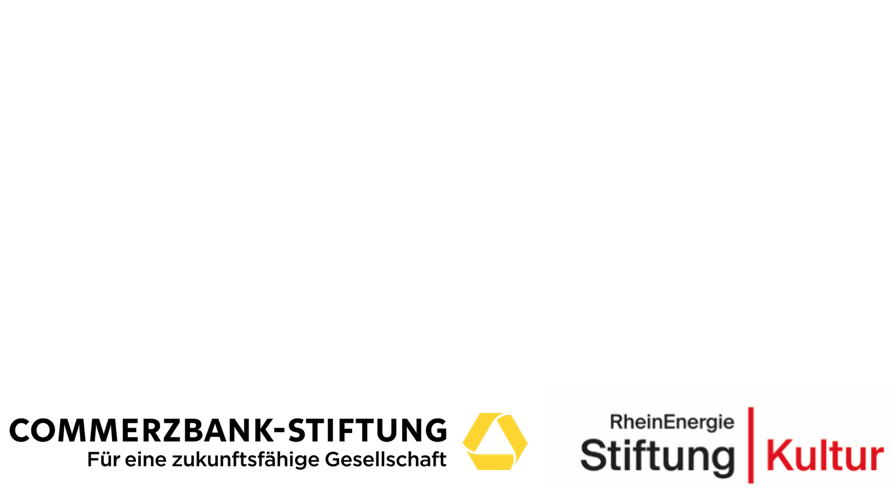VISIBLE, INVISIBLE, IRRELEVANT?
7 February — 12 April 2025
Opening: Thu 6 February, 6 p.m.
Further dates and new opening hours of the exhibition 'Visible, invisible, irrelevant?
New opening hours on weekdays:
28 March: 3—7 p.m.
04 April: 10 a.m.—3 p.m.
11 April: 12—6 p.m.
Special opening hours at the weekend*:
30 March: 12—5 p.m.
05 April: 12—5 p.m.
06 April: 12—5 p.m.
12 April: 11 a.m.—6 p.m.
*On the above-mentioned dates, at least one member of the exhibition team will be on site to discuss the content of the exhibition.
Event:
FINISSAGE
11 April,
from 6 p.m.
Public screening of the film ‘Art Meets Humanity’ by Henoc Scofield and Joy Serge (JsK) followed by a Q&A and discussion.
An exhibition in cooperation with Katharina-Henoth-Gesamtschule Cologne
With art works by Amina Benti, Anas Assadiki, Angelika Hramov, Ayman Qotbi, Bedia Dogan, Beyza Acar, Christyano Kamil, Dunja Sarwar, Esther Stolle, Fatima Shafique, Gjylsime Bitiq, Hazal Okutan, Henoc Scofield, Joy Serge (Jsk), Karim Assri, Khairi Rasho Ismael Huwairi, LucLan, Mariella Demiri, Melda Göksel, Nurallah Omer, Rugayya Aghazada, Samet Aziz Kara, Tuana Öztürk, Umut Gök, Yunus Kerem Akbas, Zehra Betül Yüksel
Supervising teacher: Tinani van Niekerk, supported by the Art Department
Artists: Cem A., Kükelhahn
With Havîn Al-Sîndy
Curatorial work: Paloma Nana
Opening hours: Mon, Thu, Fri 11 a.m. — 6 p.m.
Admission free
‘It's when someone says your name and you realise that you are called intentionally.’
‘Like chalk on a blackboard: briefly visible before it disappears again, but the traces last for a moment.’
‘Contact means raising your eyes, even if you're not sure whether someone is looking back.’
‘It's the courage to say ‘hello’ without knowing whether someone will return the ‘hello’.’
In simple language: The exhibition ‘Visible, invisible, irrelevant?’ opens on 6 February at 6 pm. It runs from 6 February to 12 April 2025 and the students [Year 13, Katharina-Henoth-Gesamtschule] explore the topic of contact. They have collaborated with the artist Havîn Al-Sîndy. The exhibition asks how people can be in contact with each other when contact is rendered impossible by political, social and economic circumstances. The students also examine the difficult conditions under which they managed to realise the exhibition. After all, they are currently preparing for their A-level exams. They thematise why schools, art and cultural institutions make it difficult to participate in art with their language, systems and regulations. The students have developed various artistic works. On display are video and sound installations, performances, drawings and spatial installations. With their works, they want to create new spaces for real encounters.
Encounters are not a given. What does contact mean, seeing each other, in a world where interactions are often shaped and deformed by external circumstances? Contact begins with a glance, a word, a gesture, a touch. But what happens when external conditions thwart or distort this moment?
In close collaboration with the artist Havîn-Al-Sîndy, the students [year 13, Katharina-Henoth-Gesamtschule] have developed an exhibition that examines the complexity of contact. It shows how young people artistically process and visualise their own experiences of encounter and exclusion.
What does it mean to approach one another when circumstances oppose such a move? And how do we create spaces in which encounters are still possible?
The exhibition invites us to look at the dynamics of proximity and distance, the ambivalence of visibility and invisibility - from the perspective of young people whose lives are impacted by political, economic and social factors.
The works include video and sound installations, drawings, performances and spatial installations, all of which illuminate the question of contact, encounter and exclusion from different angles and invite visitors to become an active part of the dialogue.
The exhibition is complemented by guest contributions and interventions from the artists Kükelhahn and Cem A.
Insights into the works:
A sound installation deals with the ruptures and misunderstandings in communication. Voices and sounds overlap, blur and create a tangible tension between closeness and distance.
In videos and drawings, the students show the brutality that contact sometimes entails - be it through conflict, exclusion or the struggle for visibility.
A performative exhamination thematises the resources that students can - or cannot - access. It also asks: Where do they come from? And what does art accessibility mean from their perspective? What structural hurdles influence their access to art and culture, and what role do social and school conditions play in this? The performance calls for accessibility to be understood not just as a buzzword, but as a process of active participation.
A floor installation displays the students' A-level examination dates. It refers to the temporal, physical and emotional constraints that young people are subjected to and encourages us to reflect on the limitations that are imposed on them.
Together, the works invite us to reflect on the conditions for encounters: What does it mean to approach each other when external circumstances separate us? How do we negotiate proximity and create spaces that enable genuine encounters?
Information on the accessibility of the exhibition:
Relaxed atmosphere: The opening event (vernissage) is conceptualised in a relaxed setting. This means that everyone is welcome in the space and can stay after the opening performance. The rooms can be left and re-entered at any time. Snacks and cold drinks will be provided. A variety of seating furniture (chairs, beanbags, stools) will be available.
Physical access: The exhibition rooms are steplessly accessible, unfortunately there is no barrier-free toilet. The a&o Hostel, about 200 metres away from the Temporary Gallery, offers barrier-free toilets.
Language access: The opening event will be held in German and English. We encourage you to ask questions at any time. Unfortunately, sign language interpretation cannot be provided.
The wall text will be displayed in German and English. The texts for individual works can be accessed via a QR code and are also available in English and German. If you do not have a smartphone, you can either contact us directly or access a printed booklet that contains all the texts accompanying the exhibition.
Contact us: If you have any further questions regarding comprehension, needs or access requirements, e.g. pick-up service from a nearby bus stop, please contact us by email at info@temporarygallery.org
Cem A. is an artist with a background in anthropology. He is known for running the art meme page @freeze_magazine and for his site-specific installations. His work explores themes such as virality and performativity, often through collaborative projects. Cem A.’s selected solo exhibitions and interventions include Barbican Centre, ZKM Karlsruhe, Berlinische Galerie, Louisiana Museum, Künstlerhaus Bethanien and Museum Wiesbaden. His work was also included in documenta fifteen, Istanbul Modern, Mudam Luxembourg, Klima Biennale Vienna and 14. Biennial of Young Artists, Museum of Contemporary Art Skopje. He has held lectures at Royal College of Art London, HEAD Geneva, HDK Valand and Universität der Künste Berlin.
Havîn Al-Sîndy lives and works in Germany and Kurdistan. She studied at the State Academy of Fine Arts Stuttgart and the Kunstakademie Düsseldorf while pursuing a degree in biology and chemistry. Her works combine art and science, question visibility and find languages for the unspeakable. She creates sculptures and installations from clay, plaster and paper in a processual and often collaborative manner, which re-localises memories, spaces and perception. She is an art professor and has taught in Kassel, Münster, at the University of Maryland and in Braunschweig.
Kükelhahn's work is always transdisciplinary. The interview is the sculptural material with which Kükelhahn creates and examines the environment for a critique of representation, transcultural grey areas and collective knowledge transfer. Formally, Kükelhahn develops site-specific, spatial encounters in which they build on the basis of intimacy, empathy and ‘cuteness’. In the joint encounter of different people with their stories, contexts and activities, they form sculptures of participation – counterbalancing discriminatory social reproductions of the present. Since 2020, their field of research is centered around the art context itself.
Image:
Amina Benti, Beyza Acar, Gjylsime Bitiq, Melda Göksel
Photos:
Temporary Gallery and Havîn-Al-Sîndy, 2025
Funding and support:
The exhibition is sponsored by the RheinEnergieStiftung Kultur, the Commerzbank-Stiftung and the Stadtsparkasse Köln/Bonn (Hier mit Herz). We would like to thank the chalk manufacturer Heinrich Kohlhaas and the Humboldt-Gymnasium in Düsseldorf for their generous donation of materials.
